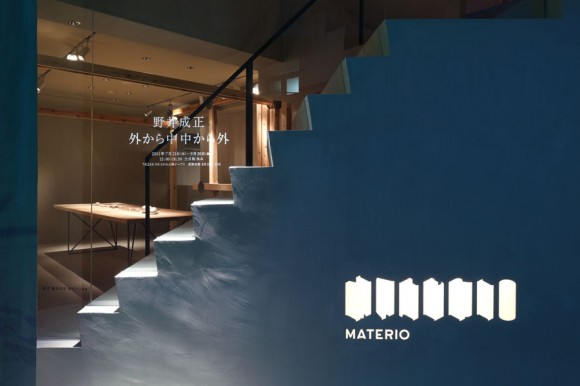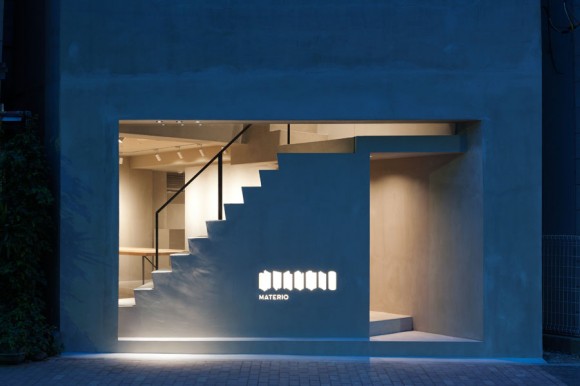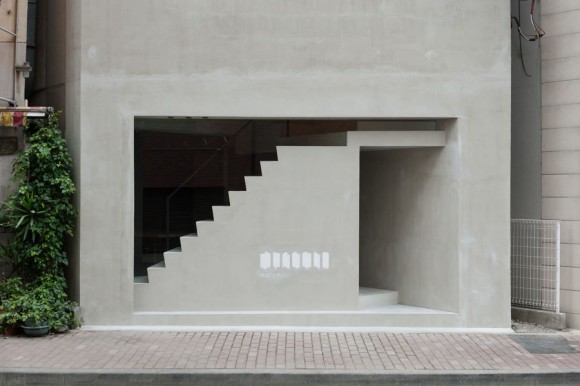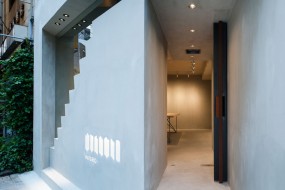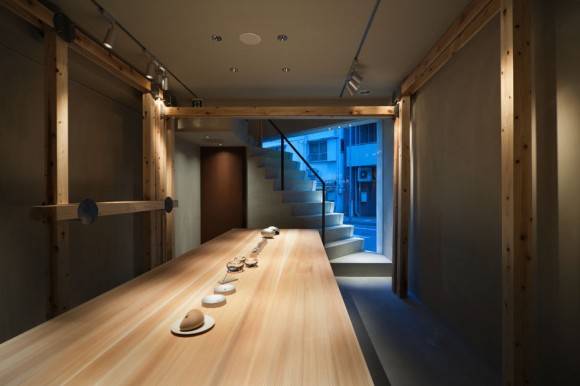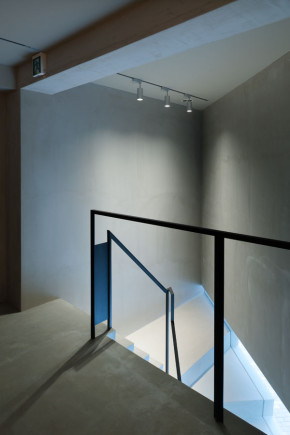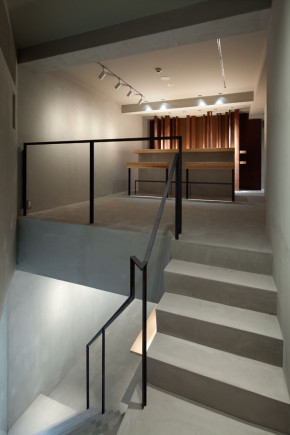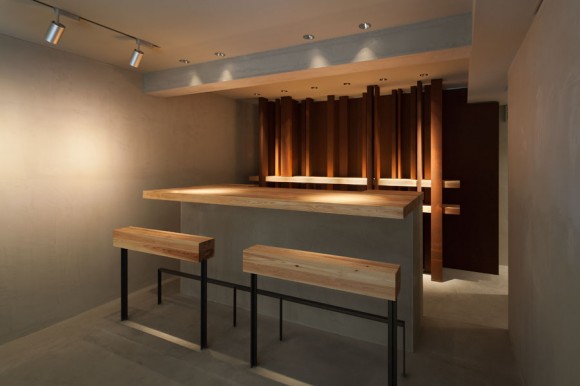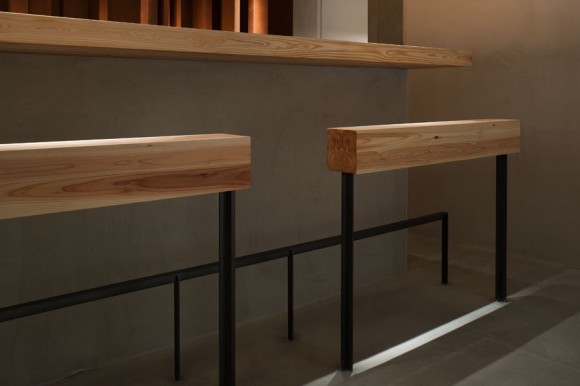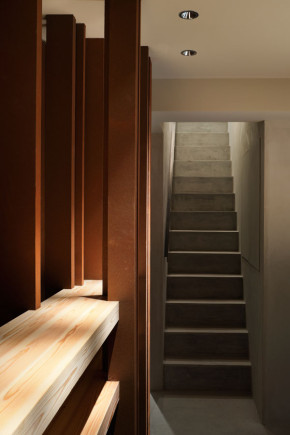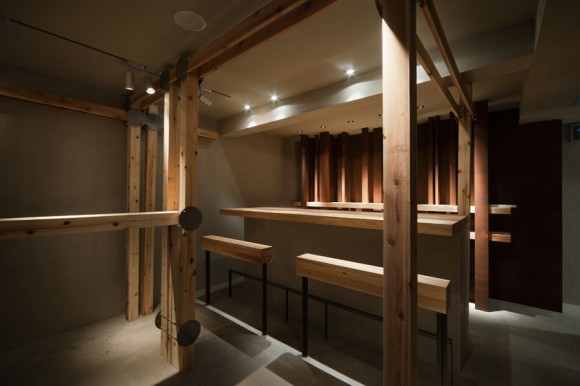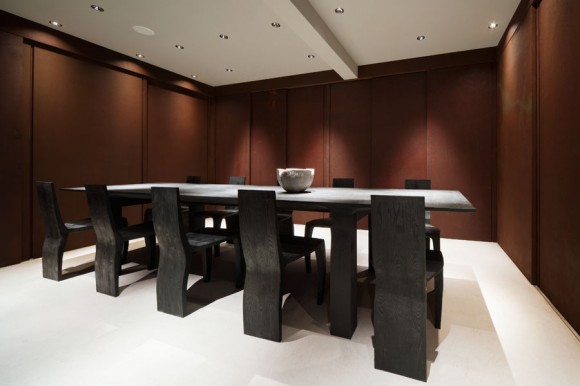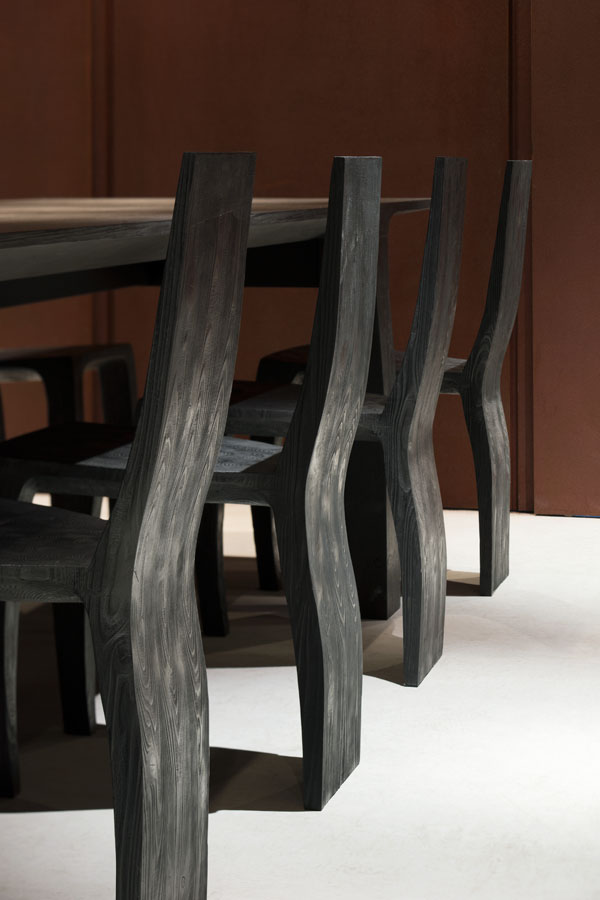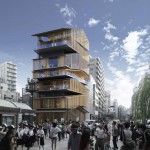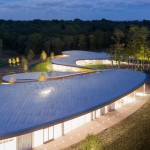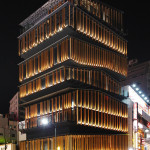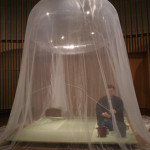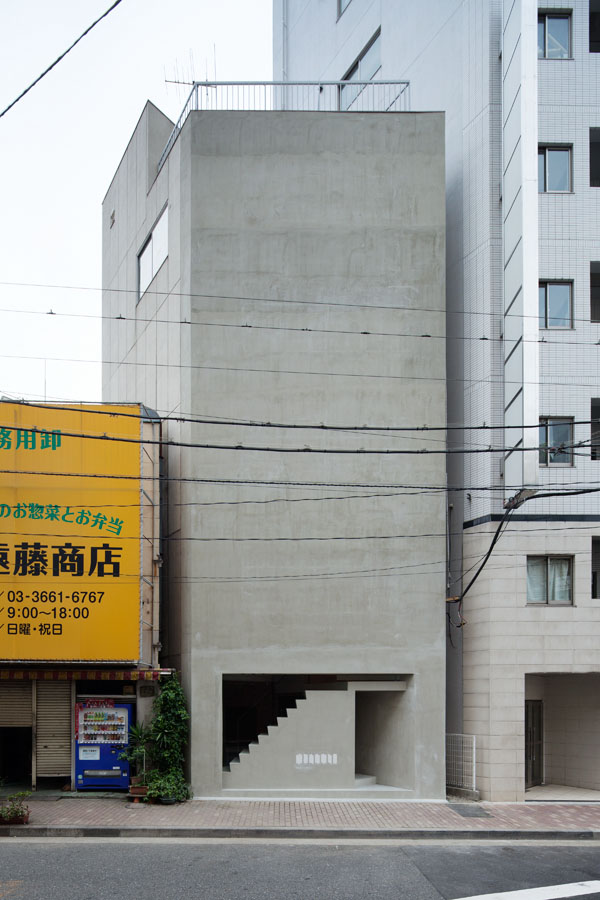 photos by Takumi Ota | click to enlarge
photos by Takumi Ota | click to enlarge
In the same way that mortar, Japanese sugi and glass come together, yoluca carries a strong hope that different people will come together in the space
On a trip to Japan late last year I had the privilege of stopping by the newly established MATERIO base., a multifunctional space in Nihonbashi that’s run by the CS Design Center (previously). Before opening its doors in July 2011, the 30-year old oddly shaped building was given a brand new renovation by interior designer Noi Shigemasa. The building itself is an elegant piece of exposed concrete that is completely flat, except for the entrance way and a single floor-to-ceiling glass window on the ground level. The window creates a heightened sense of anticipation, setting the stage for what’s to come but not revealing everything.
I entered the first floor gallery space, known as gallery yoluca, where staff were busy setting up an exhibition that was opening the next day. Yoluca is a portmanteau of the words sumika (habitat) and yoru (to stop by). Much in the same way that mortar, Japanese sugi wood and glass – all in their most basic forms – come together, the name yoluca carries a strong hope that different people will come together in the space, forming new connections and exchanging new ideas. It’s a theme that carries through the entire space, and I came to realize this as I continued my visit.
As I walked up the concrete staircase I came to Sabi Bar on the 2nd floor. This is a fascinating space with defined blocks of wood that, in turn, helps to define the purpose of the space. It’s clearly a bar where booze – that facilitator of discussion and connection – is served. But what makes the space unique is the artists and designers showing in the gallery are invited to tend the bar, where they interact with the guests on an entirely different level.
Continuing my ascent I arrived at the 3rd floor meeting room known as Sabi no Ma. This is an intimate space for small group gatherings or dinners but at the time President Nakagawa was conducting a demonstration on hand-made soba noodles. Wiping his hands of flour, he greeted me and showed me his gorgeous table and chairs custom-made by lacquer ware artist Tomoyasu Konuma.
We reflected on the his vision for the space, and the dynamics it supported. Before bidding farewell he asked me to come back sometime for some soba noodles. I told him I would.
